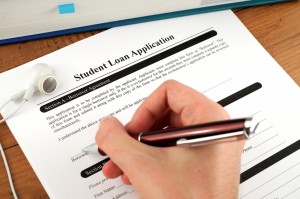The United States consumer is drowning in debt. Total personal debt has exceeded $16 trillion and personal debt per citizen is more than $50,000 – this does not include interest. According to the latest monthly data from the Federal Reserve, Americans are getting more into debt by taking out additional automobile and student loans.
In the month of February, consumer borrowing increased by $16.5 billion, up from $13.5 billion in the previous month. This is the largest one-month jump since the same time a year ago.
Credit card debt dropped by $2.4 billion after a $241 million decrease in January. Although this is considered positive news, it was offset by the $18.9 billion increase in borrowing on auto and student loans.
The largest increase in consumer debt has pushed the borrowing total to an astounding $3.13 trillion. This could be seen by the average consumer as negative astronomical numbers, but financial analysts say these are encouraging figures because it shows consumers are having the confidence to borrow again in this economy.
 Consumer spending accounts for more than two thirds of the U.S. economy.
Consumer spending accounts for more than two thirds of the U.S. economy.
“Consumer credit is keeping track with the slow but positive growth we’ve seen in consumer spending throughout the cycle and in household spending in the first quarter,” said Mike Englund, chief economist at Action Economics LLC, in an interview with Bloomberg News.
At the height of the Great Recession, consumers attempted to diminish their debt loads by reining in their credit card usage. In addition, financial institutions began to impose stricter rules and usage on credit for auto loans, commercial real estate mortgages and credit cards. However, that is beginning to change.
The Fed’s quarterly survey of senior loan officers discovered that banks are loosening their restrictions and allowing consumers to gain access to several credit avenues. The reason why this has transpired is because a substantial number of these institutions see delinquency rates falling throughout the year: 40 percent expect mortgage delinquencies to fall and as high as 20 percent see credit card and loans and other consumer loans to get better.
“Domestic banks, on balance, reported having eased their lending standards on many types of business and consumer loans and having experienced increases in loan demand, on average, over the past three months,” the U.S. central bank said in its February report.
It was reported last month that consumer spending has been rising but that savings rates are taking a hit. The Department of Commerce noted that the national savings rate has remained unchanged for a few months and stayed at 4.3 percent – at a point in 2012 some consumers were actually slashing their savings in order to spend more.
The U.S. economy has been hit hard over the past few months because of the harsh winter weather conditions. We reported that an array of sectors experienced a drop in spending because consumers were not spending their money. However, most financial experts say it will pick up now that the warmer weather has finally arrived.



